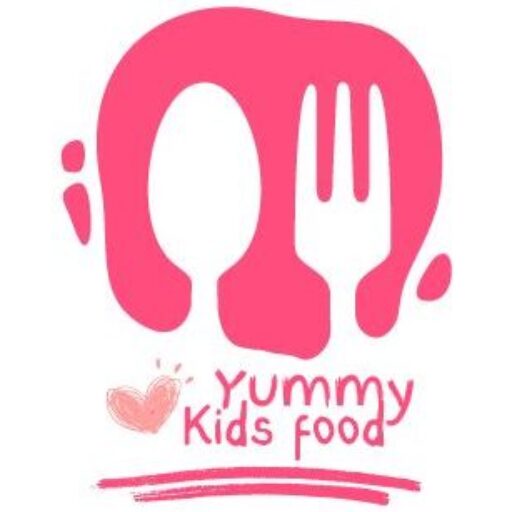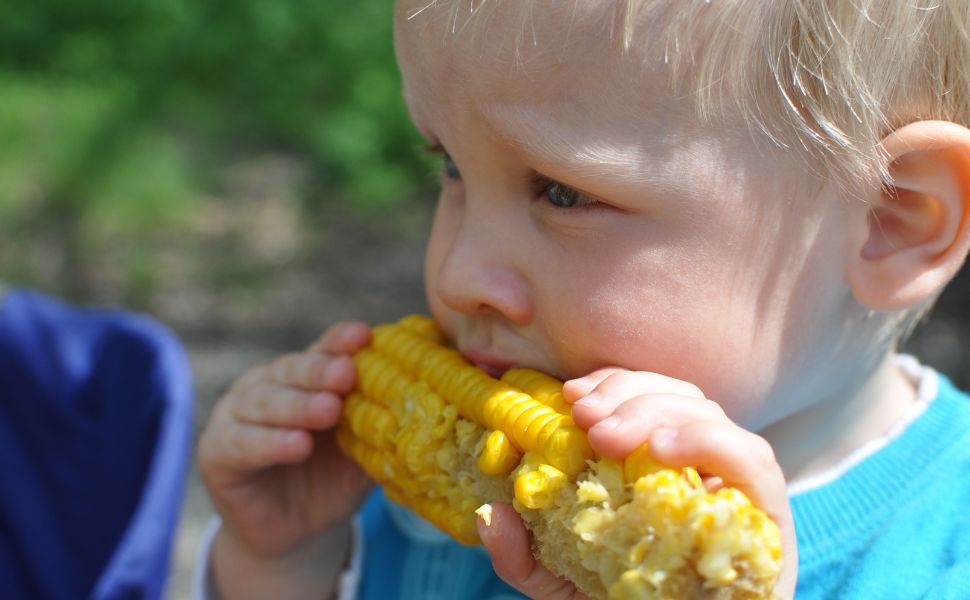Blw and choking are one of the common complaints with small food pieces being the culprit. About 30% of parents reports one or more incidents of blw choking. Know everything about blw readiness before trying blw method of introducing solids.
Baby-led weaning (BLW) is a method of introducing solid foods to infants where the baby is encouraged to self-feed with finger foods instead of being spoon-fed. This approach has gained popularity over the years, as it promotes self-regulation of food intake, the development of fine motor skills, and a positive feeding relationship between the baby and their caregiver. However, one concern that often arises with BLW is the risk of choking. In this article, we’ll discuss the potential blw choking hazard and provide tips on how to keep your baby safe.
Table of Contents

Understanding the Risks
Choking occurs when food becomes lodged in the windpipe or throat, preventing air from reaching the lungs. Babies are at a higher risk of choking due to their underdeveloped swallowing reflexes and small airways. When it comes to BLW choking hazard, some of the potential hazards include:
- Large pieces of food: Babies may not be able to chew or swallow larger pieces of food, which can get stuck in their throat.
- Foods with skins or tough textures: Foods like grapes, cherry tomatoes, and hot dogs have a round shape and a skin that can get stuck in a baby’s throat. Other foods like meat and raw vegetables have tough textures that can be difficult for babies to chew and swallow.
- Foods that break apart easily: Foods like popcorn and nuts can break apart and become lodged in a baby’s throat.
- Foods with pits or seeds: Foods like cherries, peaches, and plums have pits that can pose a blw choking hazard.
Tips for Safe Baby-Led Weaning
Now that you understand the potential blw choking hazard, it’s important to take steps to keep your baby safe. Here are some tips to help minimize the risk of blw choking:
- Start with soft, easy-to-chew foods: Soft fruits and vegetables like bananas, avocados, and cooked sweet potatoes are great first foods for BLW. They’re easy for babies to chew and swallow and won’t break apart easily.
- Cut food into small pieces: To reduce the risk of blw choking, cut food into small pieces that are easy for babies to pick up and eat. Pieces should be about the size of a pea or a grain of rice.
- Avoid foods with skins or tough textures: Until your baby has developed better chewing skills, avoid foods that have a skin or tough texture. If you do give your baby these foods, make sure to cut them into small pieces and supervise them closely.
- Keep an eye on your baby: Always supervise your baby during meals to ensure they’re eating safely. Stay close by and be ready to intervene if your baby appears to be choking.
- Take a CPR course: In case of an emergency, it’s important to know how to perform CPR on a baby. Consider taking a CPR course specifically for infants and young children.

Easy Blw Recipes
Here are a few easy blw recipes you can try with baby when introducing solids:
- Blw Banana – Banana and avocado are one of first foods that can be introduced for blw and safe with low possibility of blw choking.
- Blw Avocado – An easy way to introduce blw for baby.
- Blw Zucchini – Zucchini is a healthy option to introduce for baby led weaning. Make sure to remove the skin eliminating any blw choking hazard.
- Blw Carrots – Know how to boil carrots before introducing to baby and remove the skin to avoid any blw choking.
- Blw Sweet potato – Babies love sweet potato with it soft and naturally sweet texture. Remove skin and make sure they are completely cooked to avoid blw choking.
Related: Best high chair for Blw
FAQs – Blw and choking
How common is choking with BLW?
Baby-led weaning (BLW) is a feeding method that involves offering solid foods in their whole form and allowing babies to self-feed. Choking is a concern with any feeding method, including BLW, but research suggests that it is relatively rare.
A study published in the journal Pediatrics found that the incidence of choking among babies who were introduced to solid foods using BLW was similar to that of babies who were introduced to purees. Another study published in the same journal found that gagging (a common protective mechanism that helps prevent choking) was more common in BLW infants compared to those who were spoon-fed, but choking was rare and not significantly different between the two groups.
It’s important to note that parents should always supervise their babies while they are eating, regardless of the feeding method used. They should also be aware of the signs of choking and know how to respond in case of an emergency. Additionally, parents can take steps to reduce the risk of choking by offering appropriate foods, cutting food into appropriate sizes, and encouraging babies to chew their food thoroughly.
Does baby-led weaning increase choking?
Baby-led weaning (BLW) is a feeding method that involves offering solid foods in their whole form and allowing babies to self-feed. Although choking is a concern with any feeding method, research suggests that BLW does not increase the risk of choking compared to traditional spoon-feeding.
A systematic review and meta-analysis published in the journal Pediatrics examined the safety and nutritional adequacy of BLW compared with traditional spoon-feeding. The study found that the incidence of choking was similar between the two groups

How do I stop my baby from choking in the BLW?
Here are some tips to help reduce the risk of choking when practicing baby-led weaning (BLW):
- Offer appropriate foods: Choose foods that are soft and easy for your baby to chew and swallow. Avoid hard, crunchy, or sticky foods that can be difficult to chew or swallow.
- Cut food into appropriate sizes: Cut food into small pieces that are easy for your baby to handle and cannot block the airway. For example, cut grapes and cherry tomatoes in half, and cut meat into small strips.
- Watch your baby closely: Always supervise your baby while they are eating. Watch for signs of choking, such as coughing, gagging, or struggling to breathe.
- Encourage chewing: Encourage your baby to chew their food thoroughly before swallowing. This will help them to break down the food into smaller pieces that are easier to swallow.
- Start with soft foods: Start with soft foods that are easy for your baby to eat, such as cooked vegetables, soft fruits, and well-cooked meat. As your baby becomes more comfortable with chewing and swallowing, you can introduce harder foods.
Remember that gagging is a normal part of the BLW process and does not necessarily mean that your baby is choking. Gagging is a protective reflex that helps to prevent choking. If your baby is gagging, allow them to work the food forward or out of their mouth on their own. If your baby is choking, stay calm and take action immediately to help them.
Do pediatricians recommend baby-led weaning?
Baby-led weaning (BLW) is becoming an increasingly popular feeding method, and many pediatricians are supportive of it. However, individual recommendations may vary depending on the baby’s age, developmental stage, and individual needs.
The American Academy of Pediatrics (AAP) does not endorse any specific feeding method but does encourage parents to introduce solid foods around 6 months of age, when the baby shows signs of readiness. The AAP recommends offering a variety of healthy foods, including iron-rich foods, and avoiding added sugars and salt.
Many pediatricians may also recommend a combination of BLW and spoon-feeding, depending on the baby’s individual needs and developmental stage. It’s always a good idea to consult with your pediatrician before starting any feeding method to ensure that it is appropriate for your baby and to address any concerns or questions you may have.


3 thoughts on “BLW and Choking: How to Keep Your Baby Safe”